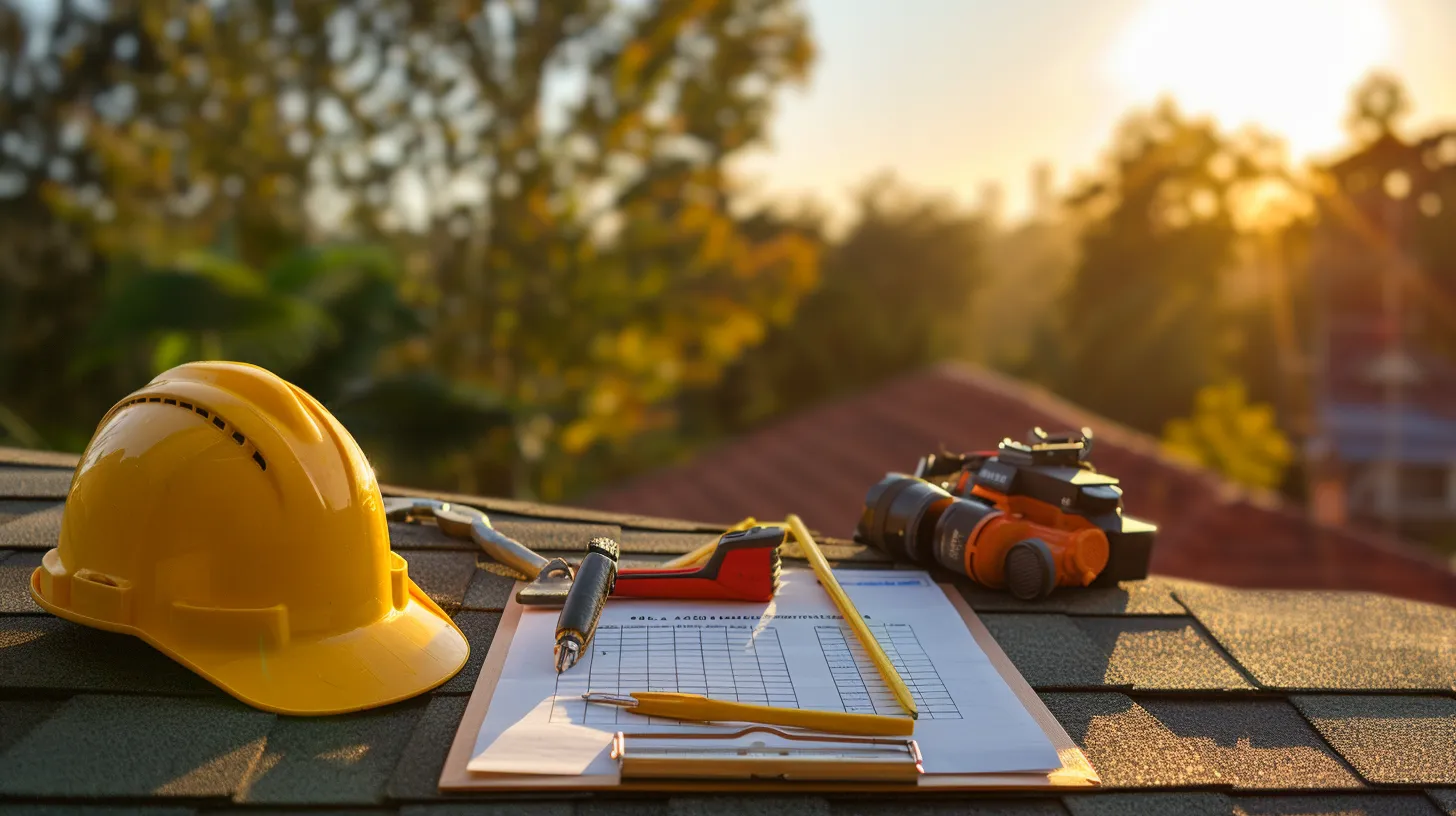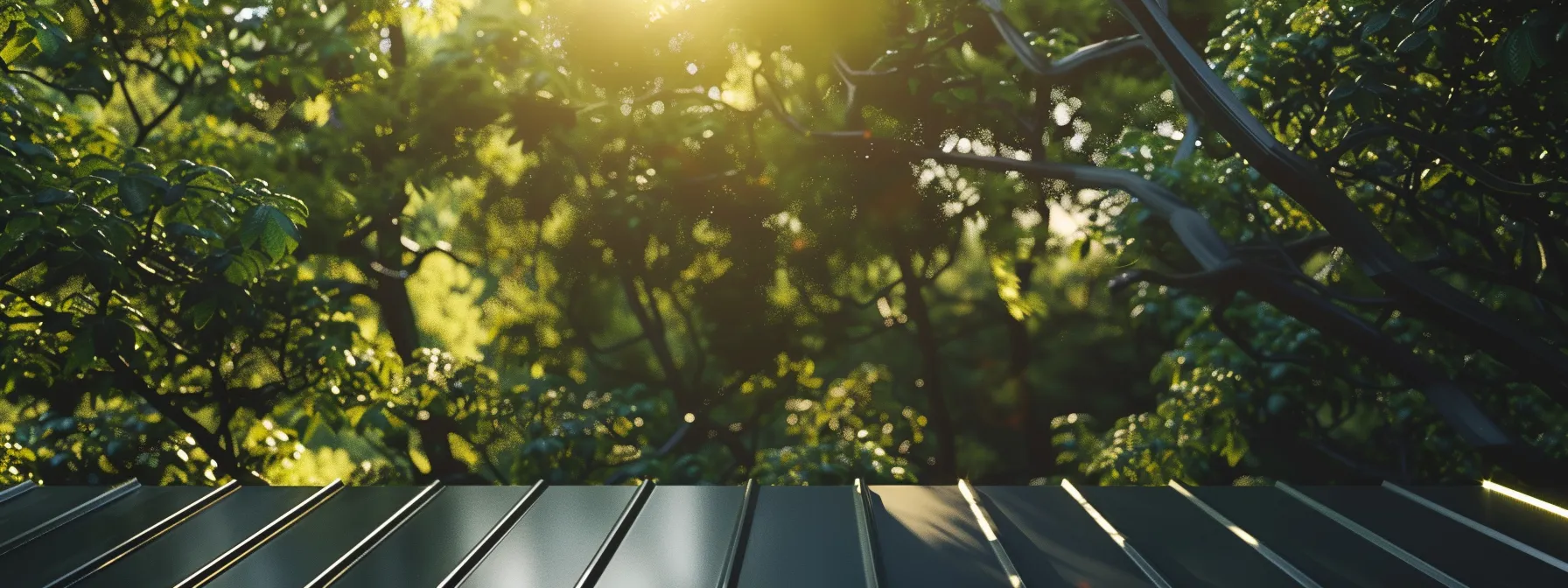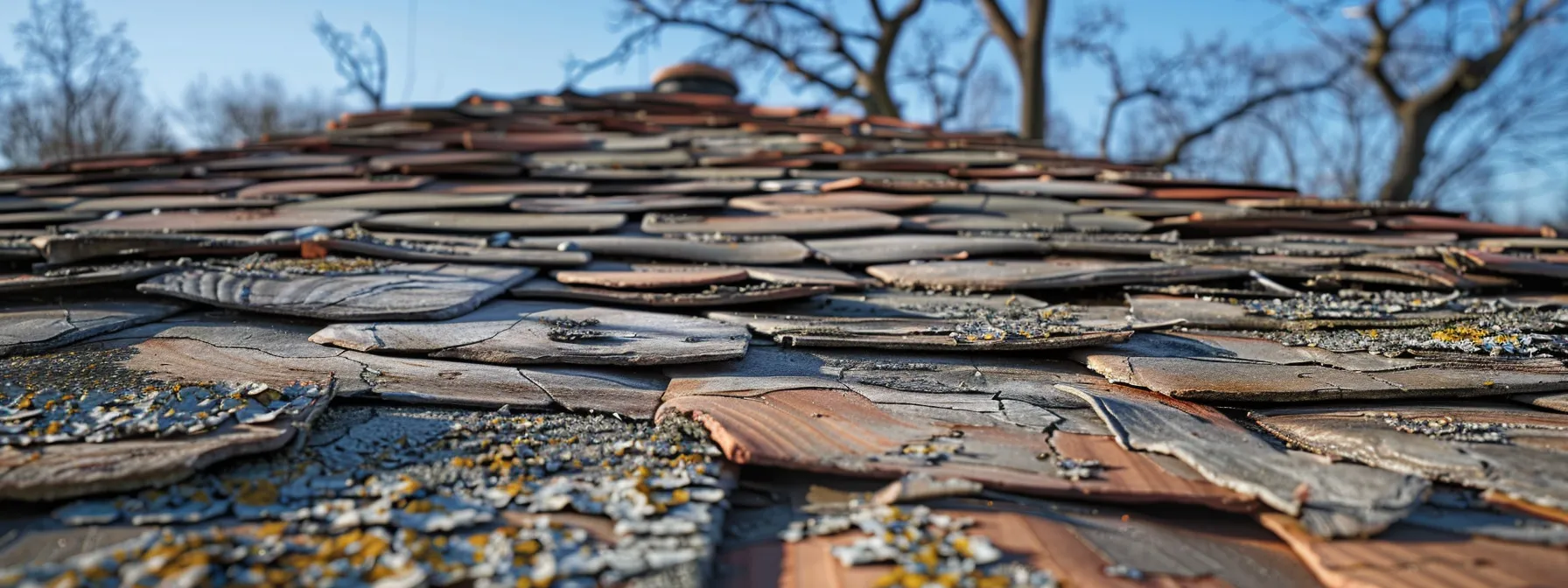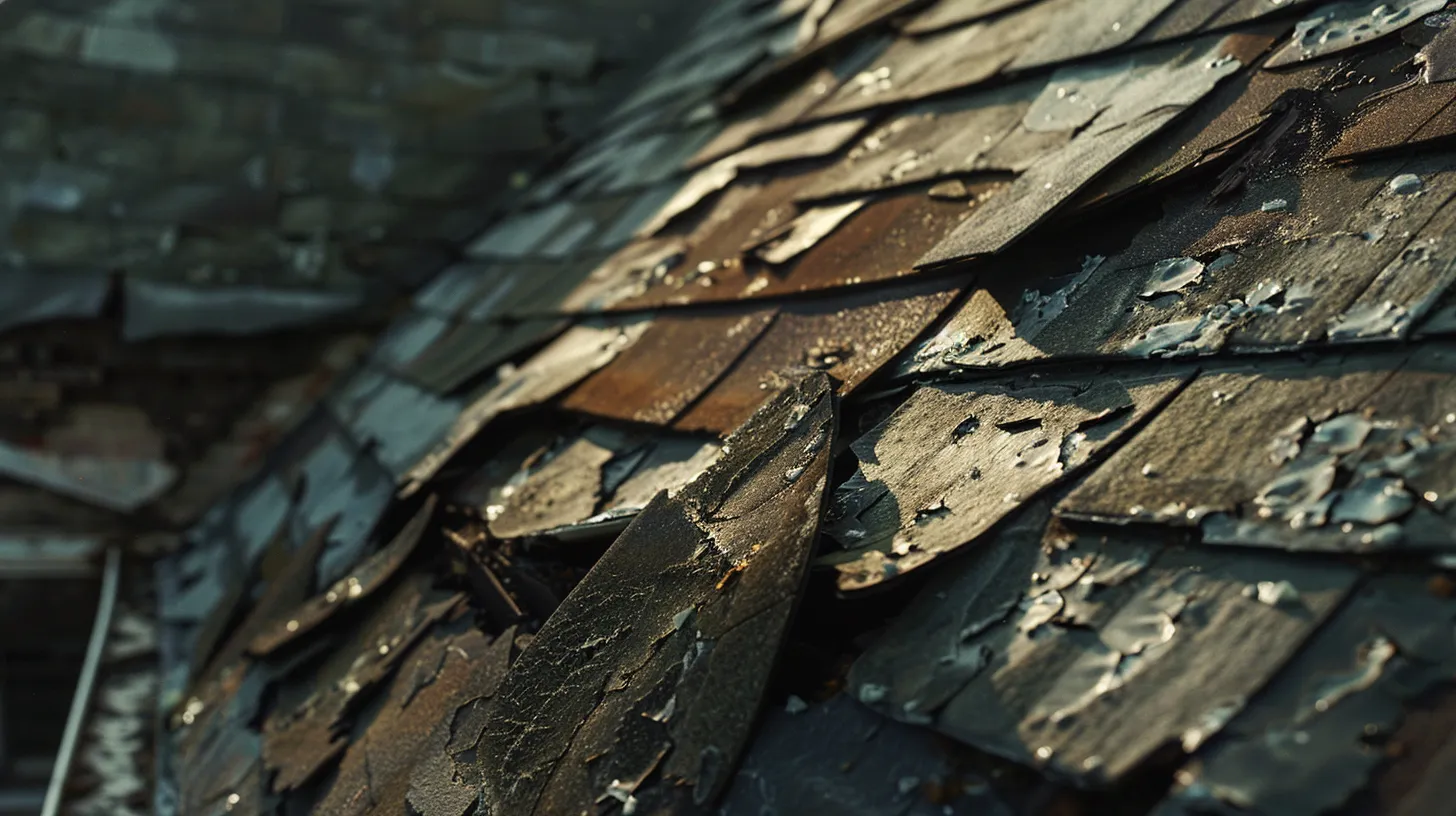
Avoid Costly Mistakes With This Roof Checklist
Is your roof showing signs of wear, but you’re unsure how to address the issues effectively? Many homeowners overlook the importance of a thorough roof inspection checklist, which can save you from costly roof repair and replacement down the line. In this post, you’ll learn about common errors to avoid during inspections, key elements to include in your checklist, and a step-by-step guide on how to conduct a successful roof evaluation. By understanding these crucial aspects, you can prevent problems like ponding and maintain the integrity of your home, ensuring your roof remains a secure shelter for you and your family.
Key Takeaways
- Regular roof inspections prevent costly repairs and maintain your home’s integrity
- Proper ventilation and insulation are vital for roof longevity and energy efficiency
- Documenting inspection findings helps track issues and prioritize necessary repairs
- Look for signs of damage after severe weather to address problems quickly
- Hire a qualified roof inspector for thorough evaluations and to avoid overlooked details
Key Takeaways
A thorough roof inspection can save you from costly roof repair and replacement later on. Look for signs of wear, especially after severe weather. A qualified roof inspector can identify potential issues before they escalate.
Proper ventilation is key to extending the life of your roof. It prevents moisture build-up that can lead to corrosion and deterioration. Ensure your attic is ventilated correctly to protect your rafters and roof structure.
Watch for signs of corrosion on metal components of your roof. Without timely attention, this can lead to significant structural problems. Regular maintenance will help mitigate the effects of harsh weather conditions.
Your roof may appear fine at first glance, but underlying issues can cause severe problems. Keeping an eye on your roof’s condition will help maintain its integrity for years. Stay proactive and keep a checklist of potential trouble spots:
- Look for signs of damage after severe weather.
- Inspect ventilation systems for issues.
- Schedule regular visits with a qualified roof inspector.
- Check for any signs of corrosion.
- Monitor the condition of rafters and support structures.
A solid roof protects your home, but a thorough inspection is essential. Next, we’ll look at why a professional roof inspection checklist matters and how it can safeguard your investment.
Understanding the Importance of a Professional Roof Inspection Checklist
Having a professional roof inspection checklist is essential for the health of your home. It guides you through each step of the inspection process, ensuring no crucial aspect is overlooked. Understanding this checklist helps you anticipate repairs and maintain your roof efficiently.
The importance of roof inspections cannot be overstated, especially for energy efficiency. A well-maintained roof helps regulate your home’s temperature, reducing energy costs. Regular inspections ensure that insulation and ventilation systems are working correctly, preventing energy loss.
Daylight coming through your roof could indicate serious issues that need immediate attention. It’s essential to inspect for holes or leaks, as they can lead to water damage and costly repairs if left untreated. A comprehensive inspection will help identify and remedy these problems before they escalate.
Incorporating a checklist into your home inspection routine allows you to stay organized and proactive. Here are some key points to consider during your roof inspection:
- Look for signs of visible damage.
- Check energy efficiency factors, like insulation and ventilation.
- Identify any areas where daylight enters.
- Schedule regular roof repairs as needed.
- Document all findings to maintain a record for future inspections.
You now know the essentials of a thorough roof inspection. Next, it’s time to discuss the common mistakes that can undermine your efforts.
Common Errors to Avoid During Roof Inspections
One common mistake during roof inspections is neglecting to check the fascias for signs of deterioration. These components are crucial for your roof’s overall stability, and any damage can lead to larger issues down the line. Always inspect the fascia thoroughly to maintain your roof’s integrity.
Another error is overlooking the importance of proper caulking around joints and flashing. Deteriorated caulk can lead to leaks and moisture problems, which may escalate into costly repairs. Make sure to regularly assess and replace caulk as necessary to maintain a waterproof barrier.
Failing to ensure adequate drainage is a frequent oversight. Insufficient drainage can cause water pooling, leading to structural damage and leaks. Regularly clear gutters and downspouts to promote effective drainage and prevent water-related issues.
Finally, prioritize safety during your inspections. Avoid climbing onto your roof unless you are properly trained and equipped. Consider hiring a professional roof inspector if you have any doubts about your safety or ability to conduct a thorough examination:
- Inspect fascias for deterioration.
- Check caulking around joints and flashing.
- Ensure proper drainage in gutters and downspouts.
- Prioritize safety and consider hiring a professional roof inspector.
Errors can cost you time and money. Use an effective checklist, and you’ll ensure nothing important slips through the cracks.
Key Elements of an Effective Roof Inspection Checklist
Identifying structural issues is vital for maintaining the integrity of your ceiling and home construction. You will examine roof coverings and materials for wear, assess the conditions of flashing and sealants to prevent moisture ingress, and evaluate gutters and drainage systems to ensure they are clear of debris. Finally, reviewing ventilation and insulation integrity protects against wind and moisture damage.
Identifying Structural Issues
When assessing your roof, pay close attention to asphalt shingles for signs of curling, cracking, or missing pieces, as these are indicators of structural issues. A compromised roof can increase the risk of leaks, undermining your home’s integrity and leading to costly repairs down the road. Regular inspections can help you catch these problems early, preserving the longevity of your roofing system and ensuring your warranty remains valid.
Inspect the chimney and surrounding areas for signs of wear or deterioration. An improperly maintained chimney can lead to water intrusions and significant structural damage. By addressing potential issues promptly, you maintain a secure rooftop environment and protect your investment, ensuring your home stays safe and functional for years to come.
Examining Roof Coverings and Materials
When examining roof coverings and materials, focus on signs of wear such as curling or cracked shingles. These indicators can lead to water damage if not addressed quickly. Regular roof inspections by a qualified roofing contractor help identify these issues early, allowing you to replace damaged materials before they escalate into costly repairs.
Pay close attention to the overall condition of your roofing materials, including the presence of missing pieces, which can compromise the system’s integrity. Engaging a professional to perform a thorough evaluation ensures that potential vulnerabilities are uncovered. By staying proactive with inspections, you can maintain your roof effectively, protecting your home from the risks associated with water damage.
Assessing Flashing and Sealant Conditions
When assessing the conditions of flashing and sealants, look closely at areas where your roof meets structures like chimneys or the eaves. Properly sealed flashing prevents water from seeping in, which is vital in avoiding roof damage. If you notice any gaps or deterioration, act quickly to prevent further issues, as these can allow moisture to accumulate and promote moss growth.
It’s also essential to inspect the sealant around any missing shingles, as this can compromise the integrity of your roof. If your roof is metal, ensure that the sealant is intact to guard against leaks. Regularly checking these components will help you maintain a strong and reliable roofing system, safeguarding your investment for years to come.
Evaluating Gutters and Drainage Systems
Evaluating your gutters and drainage systems is vital for preventing water damage to your property. You should inspect the downspouts regularly to ensure they are clear of debris and functioning correctly. Failing to maintain these components can lead to severe wear and tear on your commercial roof, resulting in costly repairs and potentially extensive damage.
When performing your inspection, consider using a ladder to get a closer look at the gutters and the condition of the bitumen around your roof edges. Look for any signs of standing water or clogs that could divert water back toward your roofing materials. By prioritizing regular evaluations, you can maintain a secure drainage system and extend the lifespan of your roof while safeguarding your investment.
Reviewing Ventilation and Insulation Integrity
During your roof inspection, it’s essential to evaluate the ventilation and insulation integrity. Poor ventilation can trap moisture, leading to algae growth and other damages that compromise your roof’s lifespan. Ensuring your attic is well-ventilated helps prevent these issues, especially after severe storms, where excess moisture can exacerbate existing problems.
Regularly checking insulation not only enhances energy efficiency but also protects your roofing materials from wear. If your insulation is insufficient, heat can build up during warm months, which might lead to roof deterioration. For commercial roof inspections, a thorough review of these aspects is crucial to safeguard your investment and maintain a reliable roofing system.
With the right checklist in hand, you can see what truly matters on your roof. Next, let’s walk through the steps to inspect it well and ensure your home stays safe.
Step-by-Step Guide to Conducting a Roof Inspection
Preparing for the inspection process is essential to ensure a comprehensive residential roof inspection. Documenting findings thoroughly helps track potential risks affecting your home’s foundation and tile integrity. Prioritizing repairs and maintenance is crucial to uphold your home insurance benefits, mitigating future costs and prolonging your roof’s lifespan. Each step guides you through important considerations and actionable insights.
Preparing for the Inspection Process
Before you start the roof inspection process, it’s essential to gather a comprehensive checklist that addresses common issues like mold and pests. By doing so, you can systematically assess areas such as your attic, ensuring that all potential trouble spots are covered. A well-prepared approach enables you to identify problems that might not be immediately visible, helping you prevent costly repairs in the future.
During your inspection, pay attention to the condition of your roofing materials and check for any signs of damage that could indicate the presence of pests or mold. Inspecting the attic for moisture or other vulnerabilities is crucial, as these factors can compromise the structural integrity of your home. By following a detailed checklist, you can gain confidence in your ability to maintain your roofing effectively and protect your investment.
Documenting Findings Thoroughly
Thorough documentation of your roof inspection findings is critical for effective management of your commercial roofing system. By recording details such as signs of wear, potential leaks, and any evidence of hail or snow damage, you create a valuable reference for future repairs or maintenance. This written record allows you to share observations with your inspector, ensuring that you both have a clear understanding of the current state of the roof and any necessary waterproofing measures.
When you document findings, it is important to include dates, specific observations, and photographs. This information can serve as proof of your proactive maintenance efforts, which can be beneficial when discussing warranty coverage or any claims related to damage. Always keep your notes organized and easily accessible to help streamline communication with your roofing professionals:
- Record observations after each inspection.
- Include photographs of damage or wear.
- Summarize necessary waterproofing actions.
- Share findings with your inspector for a collaborative approach.
- Maintain a timeline of repairs and maintenance tasks.
Prioritizing Repairs and Maintenance
Prioritizing repairs and maintenance is fundamental for preserving the integrity of your roof. Regular roofing inspections can help identify issues such as mildew growth around metal elements and on parapets. Addressing these concerns promptly can prevent minor problems from escalating into costly repairs down the line, ensuring your home remains secure and functional.
Taking proactive steps during your free roof inspection allows you to assess urgent repair needs while planning for future maintenance. You should document any visible damage, including rust on metal components or signs of wear around flashing, which may indicate deeper issues requiring attention. By staying ahead of repairs, you maintain your roof’s durability and protect your investment effectively.
A thorough roof inspection is one thing, but knowing how often to perform it is another. Stay ahead of problems by understanding the timing—your roof will thank you.
How Often Should You Use a Roof Inspection Checklist?
You should conduct a roof inspection checklist at least twice a year. This semi-annual approach helps you identify any potential issues with flashing, ensuring it remains in excellent condition. Regular inspections of the deck can prevent the buildup of moisture that might affect the wood and lead to costly repairs.
In addition to the biannual checks, you should perform an inspection after severe weather events. High winds or heavy rains can damage your flat roof or loosen shingles, creating vulnerabilities. This immediate attention allows you to address any emerging problems quickly, safeguarding your home.
Monitoring your roof’s condition before any significant seasonal changes is also wise. Before winter sets in, check the insulation and drainage systems to ensure they are functioning properly. Addressing any issues with flashing or other components of the roof can help you avoid leaks and ice damming.
Ultimately, creating a routine that incorporates seasonal checks ensures that your roof stays in peak condition. This proactive approach extends the life of your roof by protecting key elements such as the deck and flashing:
- Conduct biannual inspections to identify issues.
- Inspect after severe weather events for immediate damage.
- Check the roof before seasonal changes.
- Maintain a routine to ensure optimal roof condition.
Now that you understand when to use a roof inspection checklist, it’s time to address common questions that often arise. Let’s look at the most frequently asked questions about these checklists and uncover their value for your home.
FAQs About Professional Roof Inspection Checklists
When it comes to roof inspections, knowing what specific areas should be examined is essential for effective maintenance. A DIY approach may not ensure accuracy, which raises the question of how to choose a professional inspector. This section will address these critical points, providing practical insights to help you make informed decisions about your roof’s care.
What Specific Areas Should Be Included?
When creating a roof inspection checklist, focus on several key areas to ensure a thorough assessment. Start by examining your roof covering for any signs of wear, such as curling, cracking, or missing shingles. It’s also essential to review flashing and sealants around chimneys and other penetrations to prevent water intrusion, which can lead to significant damage if left unaddressed.
Another critical part of your checklist includes inspecting your gutters and drainage systems for blockages or signs of wear. Clear gutters promote proper water flow, reducing the risk of leaks or water pooling that could impact your roof’s integrity. By including these specific areas in your roof inspection, you can maintain its condition over time and avoid unnecessary repairs:
Can a DIY Approach Ensure Accuracy?
A DIY approach to roof inspections may seem appealing, but it often lacks the accuracy needed for effective maintenance. While you can certainly check for visible issues such as missing shingles or debris in the gutters, identifying hidden problems requires expertise and experience that most homeowners simply do not possess. Engaging a professional ensures that your roof is assessed thoroughly, including critical aspects that may not be immediately visible to the untrained eye.
Moreover, avoiding potential mistakes during your roof inspection is essential for maintaining the integrity of your home. A trained inspector will know where to look for signs of wear, corrosion, or poor ventilation that could lead to significant issues down the road. By opting for professional assistance, you not only gain peace of mind but also safeguard your investment by preventing costly repairs that often result from overlooked details in a DIY inspection.
How to Choose a Professional Inspector?
When selecting a professional roof inspector, start by verifying their qualifications and experience. Look for certifications that demonstrate their expertise in roof inspections and ensure they possess a strong history of working on various roofing systems. A qualified inspector will not only have knowledge of local building codes but will also understand the specific needs related to your roof type.
Asking for references or reading online reviews can provide valuable insights into the inspector’s reliability and work ethic. Choose an inspector who is willing to answer your questions and explain their process, as this transparency reflects their commitment to thoroughness and professionalism. By taking these steps, you can find a trusted expert who will help you avoid costly mistakes with your roof inspection checklist.
With a clear understanding of what to look for during a roof inspection, you are now equipped to protect your investment. Turn the page, as we summarize key points that will help you move forward with confidence.
Conclusion
Using a comprehensive roof inspection checklist is crucial for avoiding costly errors that can arise from neglect. Regularly inspecting your roof helps you identify potential issues early, allowing you to address them before they escalate into significant repairs. By staying proactive, you can maintain the integrity of your roofing system and protect your investment.
When you conduct roof inspections, make sure to examine key areas such as roof coverings, flashing, and drainage systems. Pay close attention to signs of deterioration, as overlooking these details can lead to severe water damage and unnecessary expenses. Your checklist is an essential tool in ensuring all vital components are assessed thoroughly.
Documenting your findings after each inspection enhances your ability to track the condition of your roof over time. This organized approach allows you to prioritize repairs effectively and ensures that no critical issues are overlooked. Maintaining a detailed record will be beneficial for coordinating with roofing professionals when needed.
By following a regular roof inspection schedule, you can ensure your roofing remains in top condition. Protect your home from unexpected costs by establishing a routine that includes seasonal checks and immediate assessments after severe weather. Here are the crucial steps to keep in mind:
- Conduct inspections at least twice a year.
- Monitor for damage after harsh weather.
- Document and address any visible issues promptly.
- Maintain regular communication with a qualified roofing professional.
Frequently Asked Questions
Why is a professional roof inspection checklist important?
A professional roof inspection checklist is vital to ensure your home’s roof remains in optimal condition. It identifies potential issues early, promotes safety, and helps maintain property value, ultimately saving you time and money on repairs.
What common errors occur during roof inspections?
Common errors during roof inspections include missing damaged shingles, overlooking proper drainage, neglecting to check flashings, and failing to assess the roof’s age accurately. These mistakes can lead to significant issues and costly repairs.
What are the key elements of an effective roof inspection checklist?
An effective roof inspection checklist includes examining shingles for damage, checking flashing and seals, assessing gutters and downspouts, inspecting ventilation systems, and ensuring structural integrity. Address these areas to maintain your roof’s performance and longevity.
How do I conduct a roof inspection step-by-step?
To conduct a roof inspection, start by examining the roof’s exterior for damaged shingles, check flashings and seals, then inspect the interior for leaks or signs of water damage. Document any issues for repair or maintenance.
How often should I perform a roof inspection?
A roof inspection should be performed at least twice a year, ideally in spring and fall, and after any severe weather events. Regular checks help maintain your roof’s integrity and extend its lifespan.
Conclusion
Utilizing a comprehensive roof inspection checklist is vital to avoid costly mistakes and preserve your home’s integrity. Regular inspections help you identify issues like wear, leaks, and improper ventilation before they escalate into significant repairs. By documenting findings and prioritizing maintenance, you can ensure timely action and effective communication with roofing professionals. Stay proactive in safeguarding your investment and extend the lifespan of your roof with routine checks and immediate attention after severe weather.





